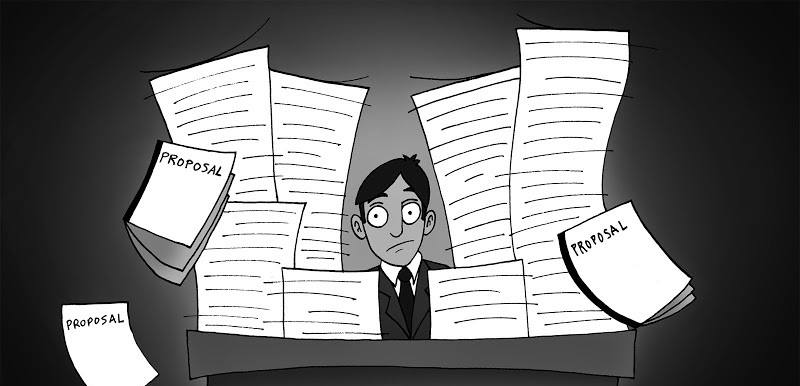Many companies collaborate with other companies for the completion of their projects like construction, engineering, and more. The employer company in this scenario needs to find the right partner company to devise up a contract that would suit well to both parties. For this purpose, companies send out a request for proposals or RFP. There is a specific RFP template that the companies can use or consider.
What Are Request For Proposal
Request for proposals are documents written and published by companies that are looking to purchase some goods or services from another company. The document provides a basic set of specifications about the intended product or service that the company wants to buy. These specifications are made available to the publish in the form of an RFP template. In this way, interested companies respond to the employer company by replying to the request for proposals. It is, however, essential to make sure the request for proposals is appropriately drafted. This would help the company make sure that they only receive relevant bids and responses to the request for proposals that they published.
Understanding The RFP Process
The entire RFP process is fundamental and easy to understand. However, its implementation is crucial for the successful completion of the corresponding project. The employer company publishes and the initial draft of the request for proposals for the contractors to view and show interest. The interested contractors may send back feedback and propose changes to the first draft of the RFP template. The employer company invites these contractors for a solicitation conference that may give them better information about the project and its requirements. After a conference and incorporating the necessary changes according to the feedback employer company publishes the final request for proposals.
The contractors now respond with their bids and proposals with respect to the project. The employer company can now evaluate their experience and profile to shortlist the contractors. The RFP process ends with the selection of one contractor for the project.
The Significance Of Request For Proposal
The most important reason for the issuing of a request for proposals by companies is to get insightful ideas for their projects. These are beneficial mechanism to complete projects efficiently as the vision of two companies can be collaborated together which may increase overall quality and productivity of the process. It is very important for employer company to find the right contractor for their project. Cohesive working ability is one thing that the request for proposals aims to achieve for the project in question. Many times government issues Request for proposals to provide a well-organized competition to the contractor companies. RFP process is, therefore, very integral to the approval of tenders.
Steps To Remember For An RFP Template
The RFP process makes it very crucial for the employer to prepare a well-explained Request for proposals to publish. This is why the RFP template becomes very critical for employers to draft and publish. The quality and number of proposals that the employer would receive depend gravely on the way that the RFP template has been prepared and the information it provides to the contractors.
Do A Thorough Study
The employer company should conduct proper research on all the requirements of its project. This research is required to make sure that the information shared in the request for proposals is accurate. This information is what the contractors would use to decide whether or not the project interests. This, in turn, would determine the number of proposals that the employer company receives.
Outline The RFP Requirements
The way the request for proposals is created and drafted by the company is a significant factor in the type of responses that they receive. It is, therefore, essential to mention all the expectations that the employer has from a proposal discussed clearly in the request for proposals. A good RFP template is thus a requirement to make sure that the employer receives relevant responses and does not end up wasting their time looking for the right match for the project.
The employer should similarly provide the details about the needs or requirements they have from the final product or service. These specifications help in filtering out the contractors who can deliver what the employer company is looking for.
Give Thought Towards Organization
The request for proposals must be prepared in an organized manner. Documents which are relevant to the working and operation of business need to be formally planned out and well versed with the right information. It is better to create a RFP template or a Request for proposals outline for the document before starting to draft it. This outline would mention all the sections and main headers that the request for proposals would contain. It may also include pointers on any subheaders that may be used in the document.
Provide All Necessary Information
The employer should make sure that one of the sections in the request for proposal outline is the requirements section. The RFP process needs to make sure that the task of choosing a contractor is made as easy as possible. Therefore the employer should lay out a clear list of requirements that they have and would not compromise on in the project. In this way, they can ensure that the proposals the receive would fall in line quickly with the requirements of the project and the employer.
Determine A Mode Of Sending The RFP
There are many ways to advertise a request for proposals in the market. Many companies traditionally used local newspapers and regular mails to send the request for proposals to the contractors. With the upgrade in technologies that are available employers, companies can now send out a request for proposals via the internet. This can be done by announcing a Request for proposals on their website or sending email for a request for proposals to selective contractors.
Moreover, they can even publish and advertise the request for proposals online on various web portals or online newspapers and magazines.










